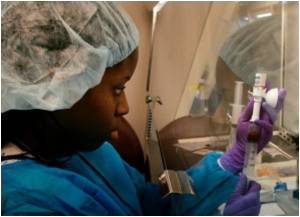Scientists in the Duke Clinical Research Institute have found that the cost of imaging studies in cancer patients covered by Medicare is growing at twice the rate of the overall costs of cancer care

The study results appear in the April 28 issue of the Journal of the American Medical Association.
Duke researchers examined the use and costs of eight different imaging technologies among roughly 100,000 patients newly diagnosed with various types of cancer (breast, lung, prostate, colon, leukemia and lymphoma) between 1999 and 2006. They found that while overall 2-year costs per patient increased annually at a rate of 2 to 5 percent, the cost of imaging rose between 5 and 10 percent per patient. "Patients are undergoing more imaging studies. As newer, more expensive imaging technologies are used more frequently, the overall cost of imaging is going to increase", says Michaela Dinan, a doctoral student working in the DCRI and the lead author of the study.
Even though imaging costs are rising much more rapidly than the costs of overall cancer care, imaging costs comprise only 6 percent of the total Medicare medical budget for cancer patients, the authors say.
The use of PET scans (positron emission tomography) grew the fastest, according to Dinan. In each cancer type, the number of PET scans per beneficiary increased at a mean annual growth rate of 36 to 53 percent, however the total number of PET scans remained low.
PET scans, which reveal functional as well as anatomical information about tumors, are a relatively recent innovation, and only in the past few years have professional guidelines recommended they be used in the management of some cancers. PET scans can be six times as expensive as CT (computed tomography).
Advertisement
The study showed that in 1999, newly diagnosed lung cancer patients had, on average, about 21 imaging studies during the first two years of their treatment.By 2006, they were undergoing about 24 studies. Patients with lung cancer and lymphoma faced the highest imaging costs among all cancer patients, more than $3,000 on average during the first two years of treatment.
Advertisement
Some health policy experts predicted higher rates of advanced imaging use and costs in the wake of the 2003 Medicare Modernization Act, which slashed reimbursement rates for chemotherapy services. But Kevin Schulman, MD, professor of medicine at Duke and associate director of the DCRI says, "We definitely saw an increase in the most costly imaging services for patients with cancer. However, we can't determine whether the trends we observed were a direct response to the reimbursement changes in 2003. Use of imaging increased throughout the study period, both before and after the reimbursement changes."
But study co-author Edward Patz Jr., MD, James and Alice Chen professor of radiology, professor in pharmacology and cancer biology at Duke and a specialist in lung cancer imaging, says that regardless of what is driving higher use and costs, patients should be aware that "more" is not necessarily "better" when it comes to imaging. "When it comes to more imaging studies, we should consider more rational care – care based on evidence that demonstrates greater numbers of imaging studies will make a difference clinically."
Source-Eurekalert
RAS















